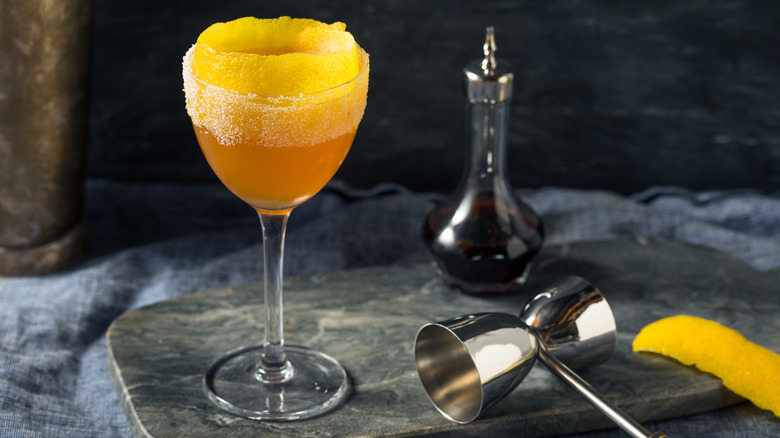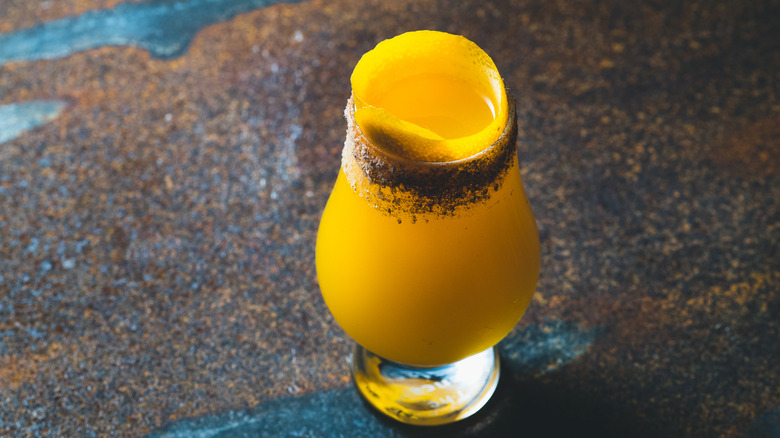The Elements That Make Crusta Drinks Unique
An aesthetically placed garnish can help elevate a basic drink recipe, and for crusta cocktails, the decorative element is essential. Crustas are drinks easily identified by glasses that have been rimmed with sugar along with a significant slice of lemon zest or orange peel placed into the top of each glass. We're not talking about a thin sliver, either; a chunky piece of brightly colored zest is wrapped around the inside of the upper lip and portion of your glass to form a visible line.
While sugar rims for other beverages are made on the spot, the garnish for crusta cocktails can be made long before bartenders start slinging them, allowing enough time for sugar to harden along the surface of the glass. In addition to the peel, crusta cocktails have a standard, nearly formulaic recipe of a spirit mixed with lemon juice and sugar or some kind of liqueur.
Rim the glass with sugar and a thick slice of lemon zest for the crusta experience
Though a crusta cocktail presentation looks sophisticated and sweet, the drink can lean on the sour side. Brandy crusta cocktails are frequent orders, but gin, rum, and whiskey crustas can also be poured and served. The idea behind this beverage is to let the base spirit shine while providing a cushion of support with other ingredients that won't overpower the senses of a drinker.
For at-home bartenders hosting a party, glasses can first be rimmed with sugar, and the thick zest can be strategically placed along the rim of the glass. Guests can press the peel further into the drink to add a bit of aromatics to each sip. Because the citrus peel must fit perfectly into the top of the glass, Old-Fashioned and wine glasses are commonly used to serve these properly.
If you're wanting a more complex presentation, however, an appropriately-sized lemon can be cut, hollowed, and inserted into the glass. The fruit and the glass are then dipped into sugar to coat both the glass and peel before the decorated vessel is left to harden. Over time, the peel becomes affixed along the lining of the glass and the bond becomes tight and sealed. Drinkers can then enjoy their libations from fruit protruding over the rim without losing a drop of alcohol.

